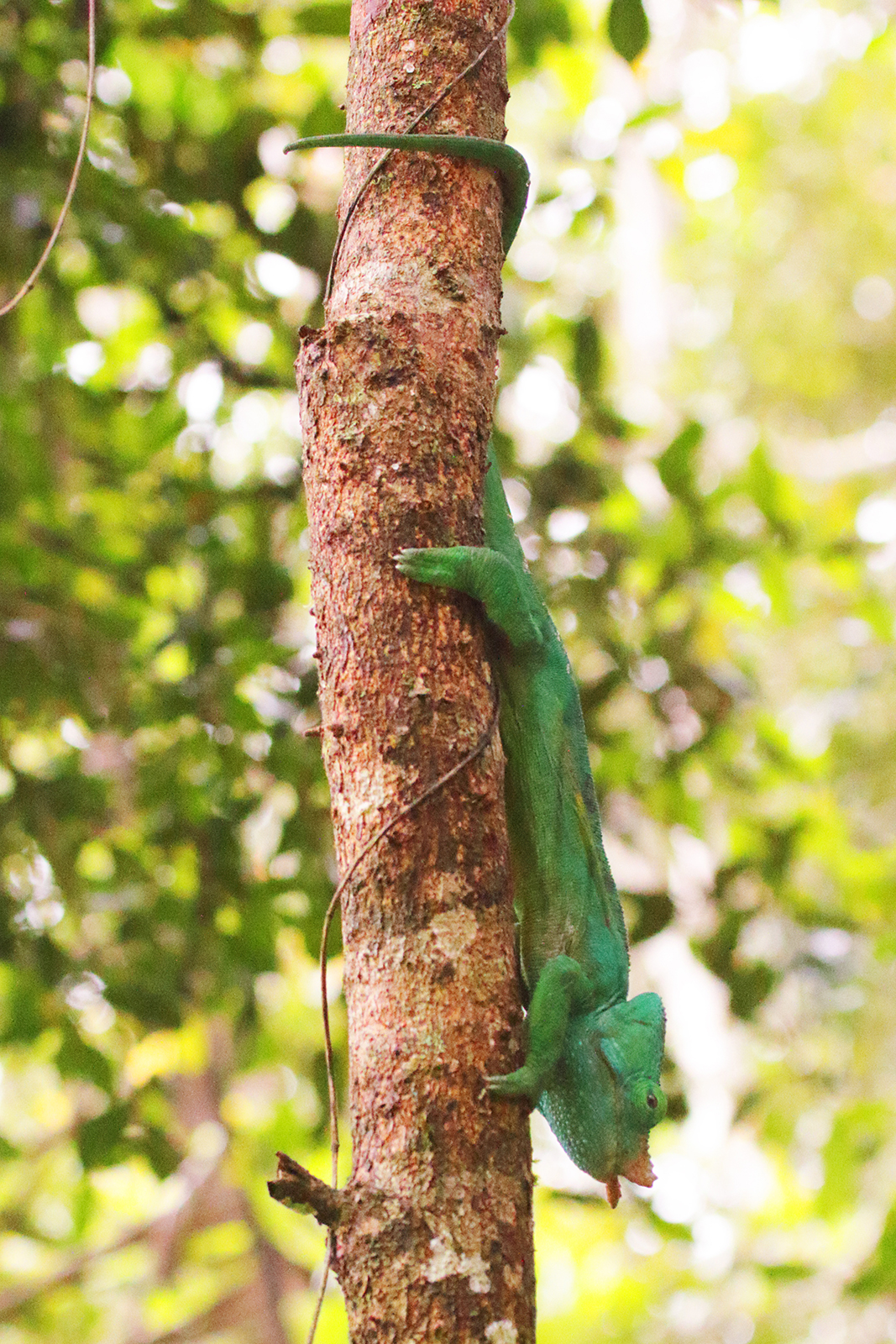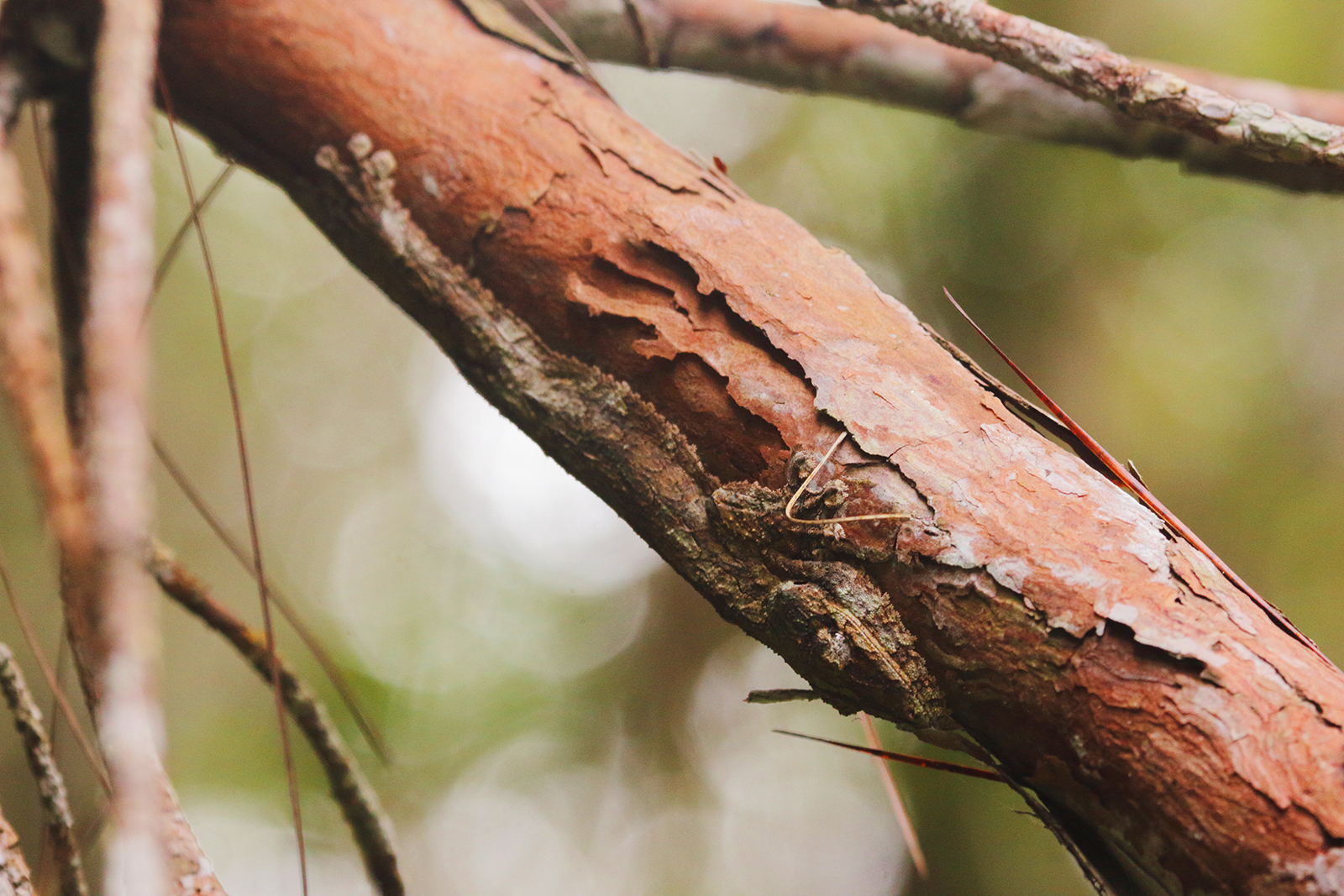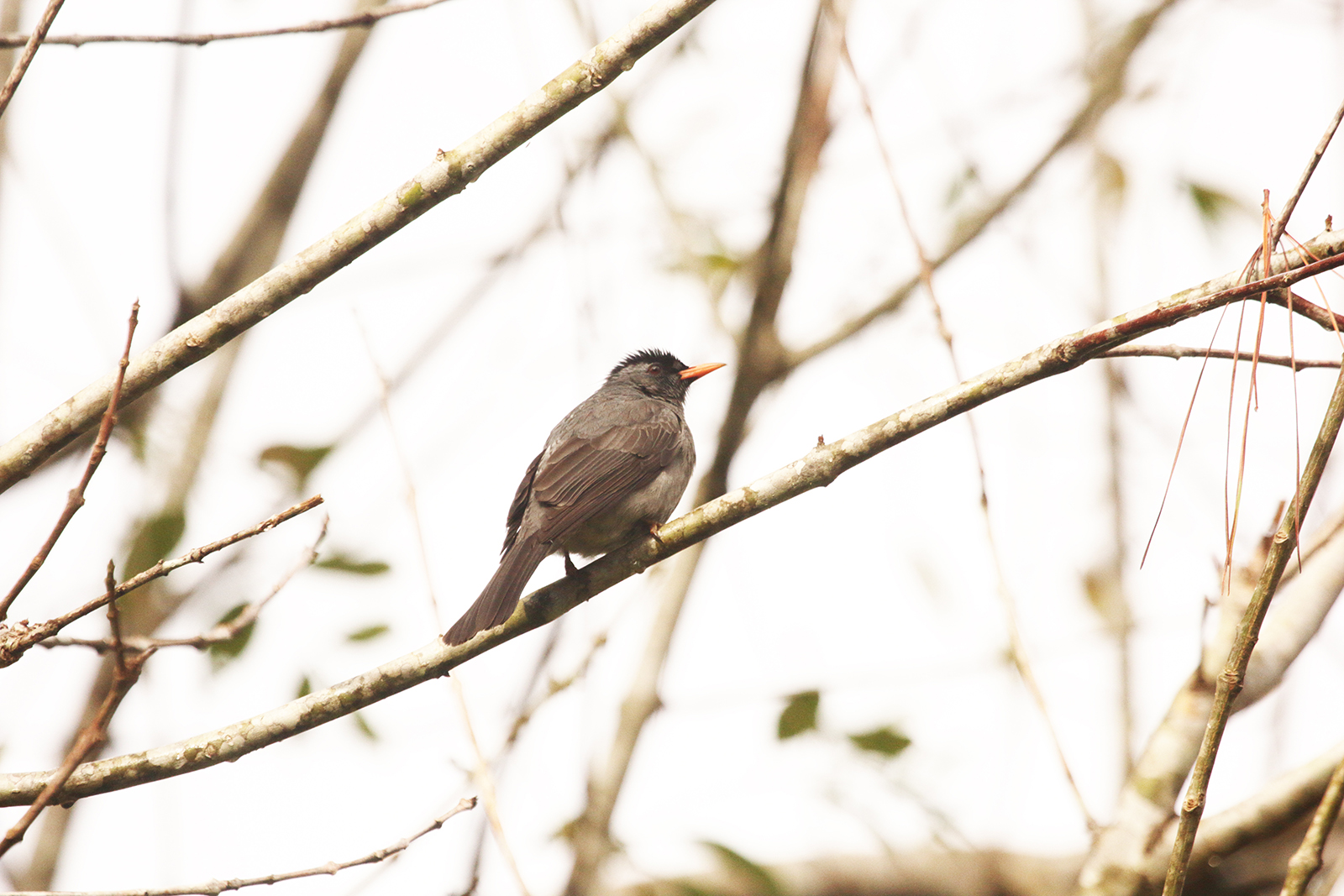The Eighth Continent – Madagascar – Part 6: Rainforests of Andasibe
Madagascar has a large variation of geography across the country and hence a large variation in ecology as well. During my trip to Madagascar, I wanted to cover at least two ecological systems, a dry one and a wet one. Once I finished my trip in Morondava, the dry lowland/coastal region, it was time for me to head to Andasibe, located in the wet highland area of Madagascar.
Andasibe is about a four hour drive from Antananarivo on RN2 and hosts two separate national parks that are now combined in to one large park. The Mantadia region of the Andasibe-Mantadia national park is about 10km north of the main road RN2. The Analamazoatra Special Reserve of the national park on the other hand is about 1-2km from the main road.
The Analamazoatra reserve also has a private reserve similar to the Kirindy Private Reserve. The Association Mitsinjo was an organisation that the local villagers found back in 1999 and started managing the Mitsinjo Private Reserve from 2003. In my limited experience of nature conservation, the local involvement is an important factor in any conservation effort. In most cases if not all, all over the world, settlements that surround the conservation areas and buffer zones are deeply engulfed in poverty. The more important factor for the villagers is to make money to live for the next day. In my opinion, this plays a significant factor in all sorts of poaching and illegal activities that are extremely harmful to biodiversity and conservation. However if you flip the table around and make a commercially viable proposition to the villagers, they in turn take an interest in protecting what provides them a livelihood. I chose Mitsinjo as the site for my two walking safaris.

Indri (Indri indri) is the world’s largest lemur. 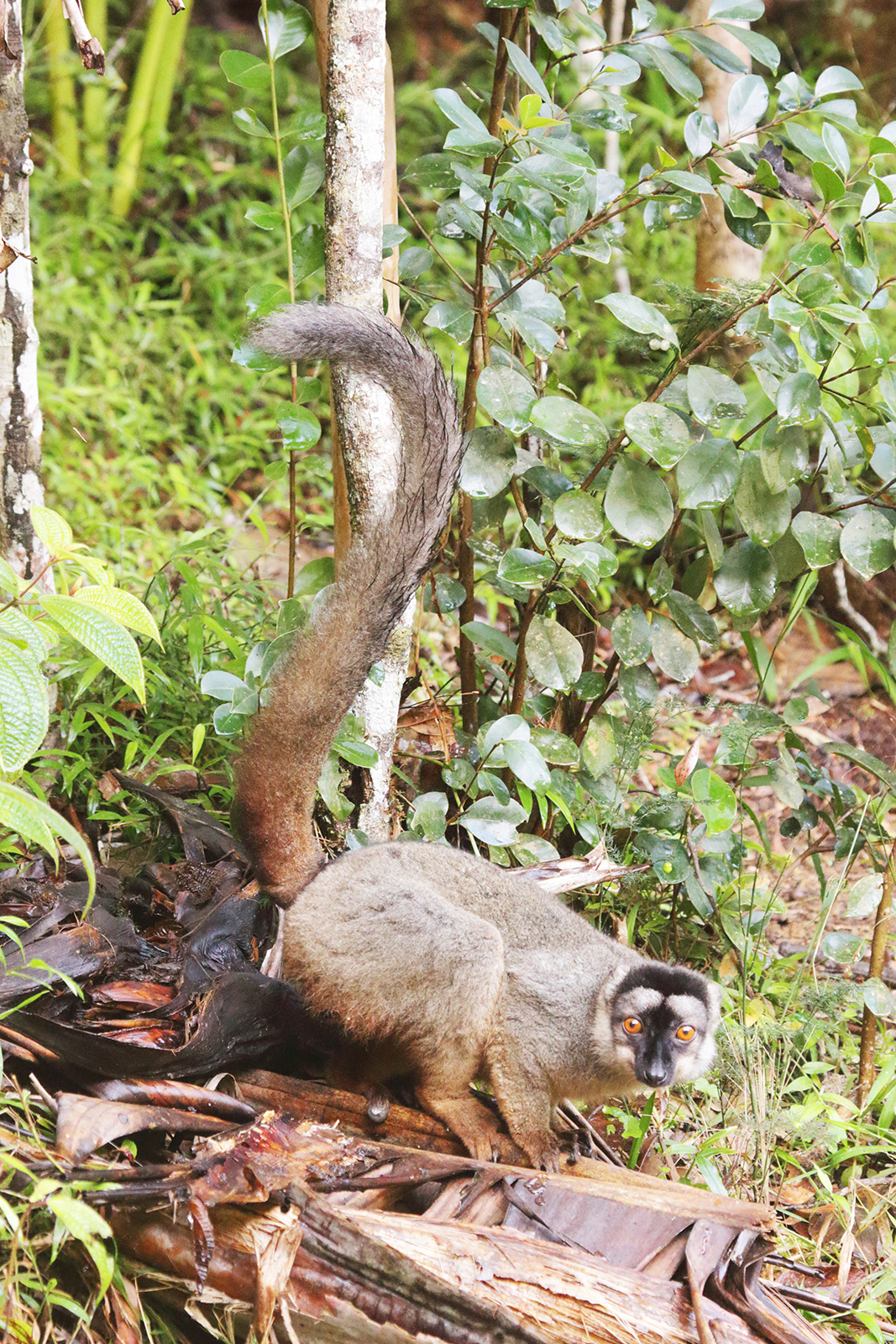
The Red Fronted Brown Lemurs (Eulemur rufus) are found in Analamazoatra as well. 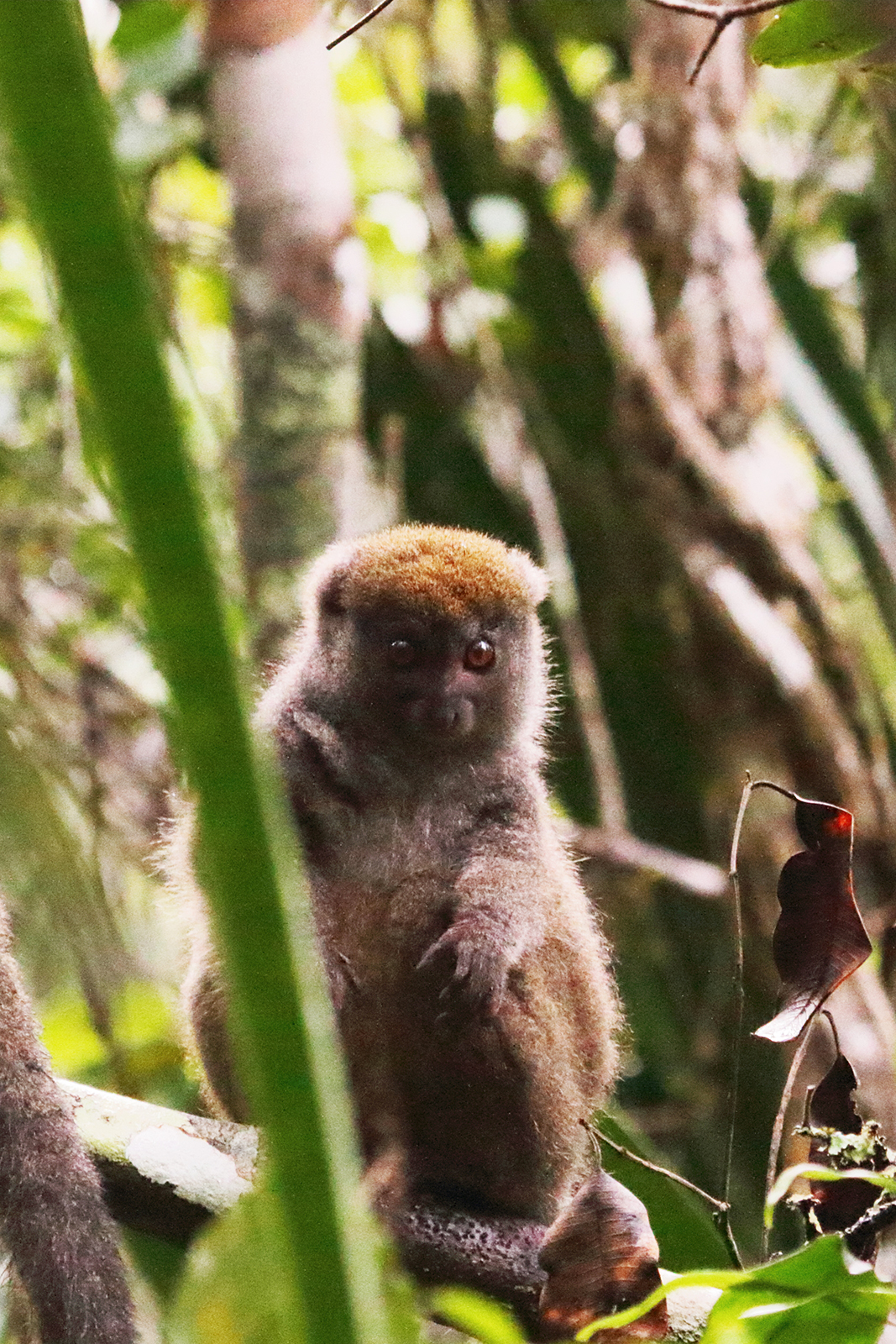
The diet of Bamboo Lemurs (Hapalemur simus) almost exclusively consists of Bamboo shoots
Andasibe is home to the Indri (Indri indri) the world’s largest Lemur. Similar to the Sifakas, Indris are also tailless. While there are some taboos that protect Indris, they are still considered to be critically endangered and have a declining population mostly due to habitat destruction due to slash and burn agriculture. Behaviour of the Indri has caused many of the myths about it to portray it as a human in some form. Indris sunbathe in the mornings by climbing to the top branches of a tree and sitting cross legged, with their hands resting on the knees and palms outwards. The peculiar pose, very similar to meditating human or a yogi pose, has caused some to call this a “sun worshipping” ritual. Indris are also interesting in the fact that they have very long term monogamous relationships. Most Primates are not monogamous. Chimpanzees and Bonobos for example have very promiscuous sexual behaviour while Monkeys and Gorillas form various forms of polygamous troops. Perhaps this social behaviour of Indris including the two year time period they spend on raising the young, may have caused humans to identify them closer to humanity.
During my visit to Andasibe, I was lucky to witness a pair of Bamboo Lemurs (Hapalemur simus). Bamboo Lemurs are interesting that they look quite similar to the Marmosets found in South Americas. However the two species are not related at all other than belonging to the same order of primates which all monkeys and even humans belong to. Bamboo Lemurs are named such because their diet consists almost exclusively of Bamboo shoots, like the Giant Pandas. Similar to the Pandas, the Bamboo Lemurs also need to have a digestive mechanism to detoxify the Bamboo shoots they eat as they contain cyanogenic substances which convert to hydrogen cyanide. While there is some research done in to how the Giant Pandas manage to break down the cyanogenic substances, not much seems to be known about how the Bamboo Lemurs manage to do it, especially given that they may ingest about 12 times the lethal dose of cyanide in a day.
To me however, Lemurs are just one part of the biodiversity the island offers. Madagascar is home to over 100 species of chameleons, including the world’s smallest and the world’s largest species. Total number of species of chameleons in Madagascar is over a half of the global number and they are all endemic.
Parson’s Chameleon (Calumma parsonii) is considered the world’s largest chameleon by weight. It lays about 20-25 eggs at a time and have an incubation period of about 20 months. However like most species that lay large amount of eggs, only a few would grow up to their adulthood. Parson’s Chameleons also have a reasonably long lifespan, reaching to about 8-9 years. There are two subspecies of the Parson’s Chameleon and the smaller subspecies Calumma parsonii cristifer is found more in the Andasibe region. While my guide mentioned that these chameleons don’t change their colour, I could not find any proper scientific literature backing it.
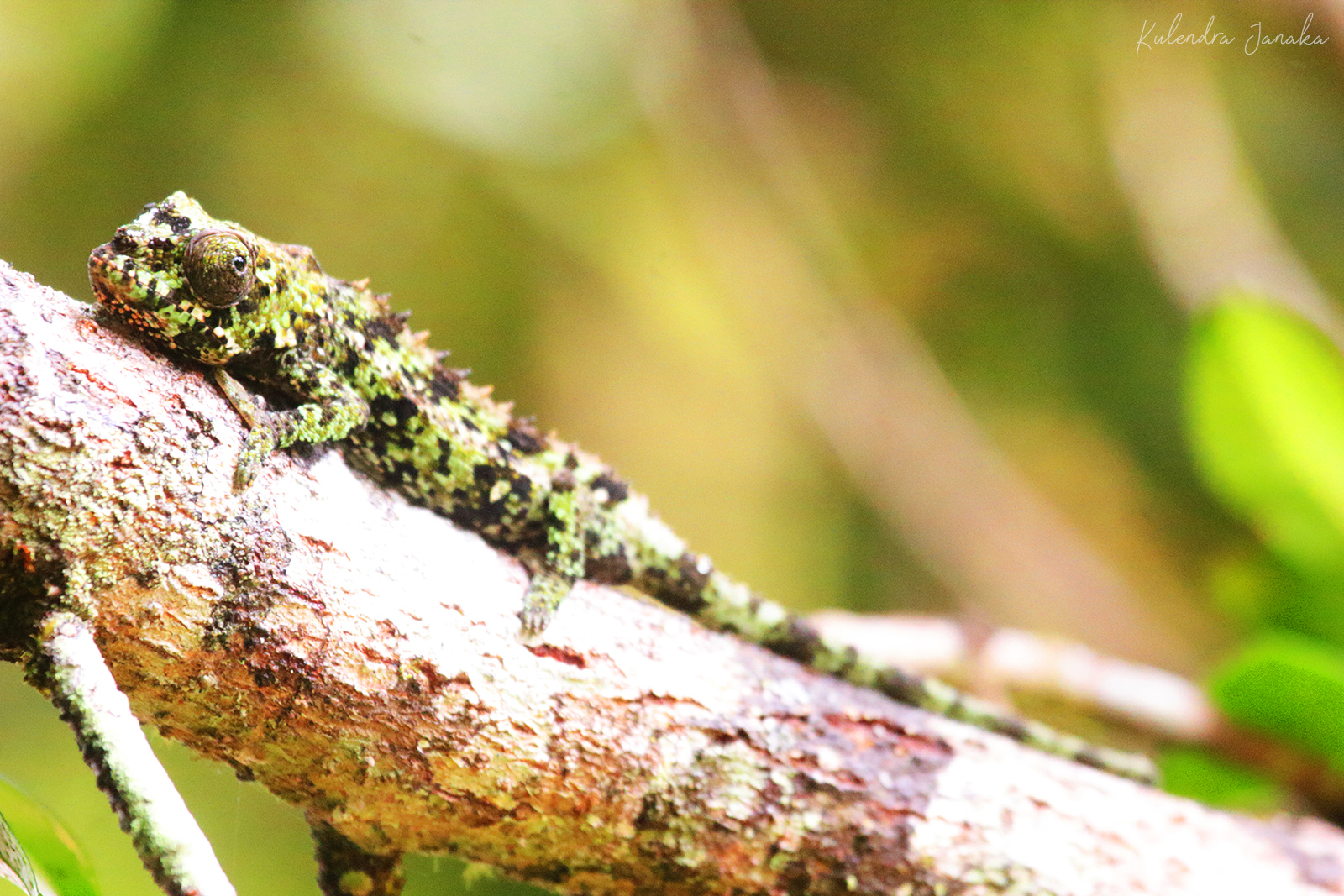
Elephant Eared Chameleon (Calumma breviconis). 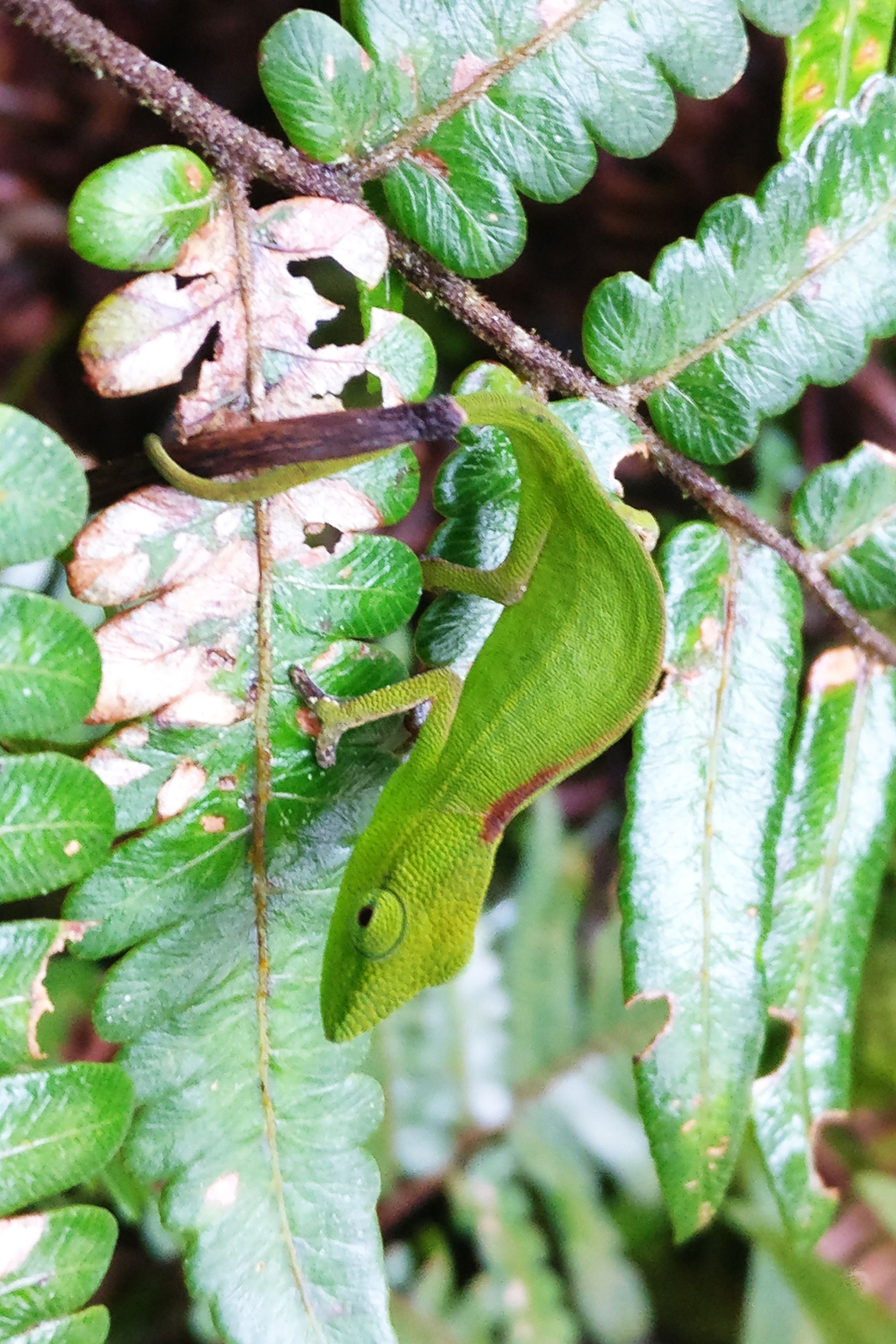
Perinet Chameleon (Calumma gastrotaenia) is named after the Perinet reserve where it is found. 
Nose Horned Chameleon (Calumma nasutum) is one of the smallest species of chameleons in Madagascar.
The Nose Horned Chameleon (Calumma nasuta) is one of the smaller types of chameleons that you can see in Andasibe. It is also one of the less studied chameleons that there is still debate as to whether there is just one species of them or there are multiple species. I was also lucky to see a Perinet Chameleon (Calumma gastrotaenia) that is endemic to the wet rainforest regions along central and eastern Madagascar.
Chameleons have a complete 3600 vision, that’s right, they can see everywhere without moving their head. Their eyes are also independently movable meaning that while one eye sees above, the other could see below. This brings another important aspect of vision into play, binocular vs. monocular. Binocular vision requires two viewpoints with overlapping images and facilitates depth perception. Human eyesight for example, is binocular. Because the eyes are both facing the same direction there is a very large area of overlap between what the left eye sees and what the right eye sees. Slight difference in positions between what each eye see allows the brain to approximate the distance. Cows on the other hand, have mostly monocular vision (except for a very small range of about 250 – 300) because most of what one eye sees, the other eye does not see. For chameleons, this oscillates between monocular to binocular based on how exactly they position the eyes. It could be scanning the surroundings for potential prey with each of the eyes independently and then once it spots something interesting, would focus both eyes on the object allowing them to go for a precision strike.
The Analamazoatra is also home to various other endemic species animals. Thanks to my eagle eyed guide, I was able to see a Leaf Tailed Gecko (Uroplatus phantasticus). As the name implies the tail of the gecko looks like a dried leaf. I don’t know why it needs this additional camouflage as it is quite hard to spot anyway. Given the different ecology, the bird species are also different to what you find elsewhere. The guide in training who was accompanying us walked ahead of us to find some interesting animals and managed to spot a Frances’ Sparrowhawk (Accipiter francesiae) just ahead of us.
As we were returning from my second forest walk, I was talking with the guide on the current state of forests in Madagascar. Only about 20% of Madagascar is currently forested. A large part of this is still the primary forest. While the deforestation rates have reduced, there is still a lot to do to save the biodiversity of Madagascar. There is a lot to be studied about the ecology of this amazing country and I hope that we are not too late as we were for the Elephant Birds of Madagascar.
